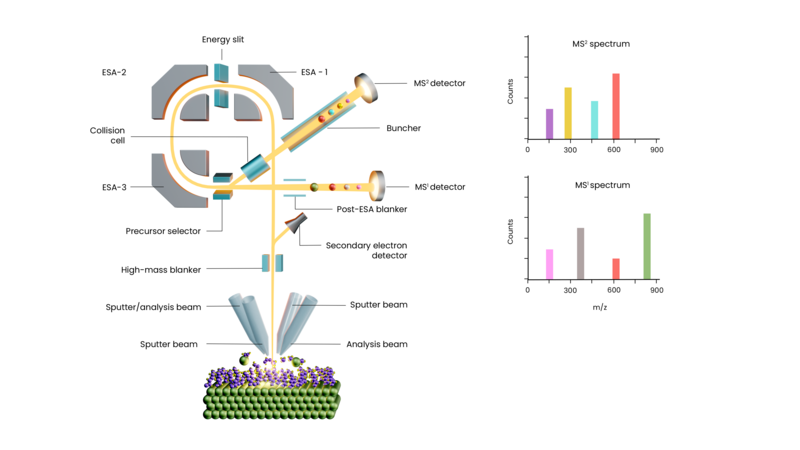Time-of-Flight Secondary Ion Mass Spectrometry (TOF-SIMS) provides elemental, chemical state, and molecular information from surfaces of solid materials. The average depth of analysis for a TOF-SIMS measurement is approximately 1 nm. Physical Electronics TOF-SIMS instruments provide an ultimate spatial resolution of less than 0.1 µm. Spatial distribution information is obtained by scanning a micro focused ion beam across the sample surface. Depth distribution information is obtained by combining TOF-SIMS measurements with ion milling (sputtering) to characterize a thin film structure. In addition, the Physical Electronics TOF-SIMS instrument provides a unique 3D analysis capability that combines in-situ focused ion beam sectioning with high mass resolution and high spatial resolution imaging (HR2) to provide 3D chemical characterization. The information TOF-SIMS provides about surface layers or thin film structures is important for many industrial and research applications where surface or thin film composition plays a critical role in performance including: nanomaterials, photovoltaics, polymer surface modification, catalysis, corrosion, adhesion, semiconductor devices and packaging, magnetic media, display technology, thin film coatings, and medical materials used for numerous applications.
TOF-SIMS is accomplished by exciting a samples surface with a finely focused ion beam which causes secondary ions and ion clusters to be emitted from the samples surface. A time-of-flight analyzer is used to measure the exact mass of the emitted ions and clusters. From the exact mass and intensity of the SIMS peak, the identity of an element or molecular fragments can be determined.
Physical Electronics TOF-SIMS instruments function in a manner analogous to SEM/EDS instruments that use a finely focused electron beam to create SEM images for sample viewing and point spectra or images for compositional analysis. In contrast to SEM/EDS which has a typical analysis depth of 1-3 µm, TOF-SIMS is a surface analysis technique with a typical analysis depth of less than 2 nm and is therefore better suited for the compositional analysis of ultra-thin layers and nanoscale sample features. In addition, TOF-SIMS can be used to characterize molecular information from organic materials and tissue sections for medical research that would not be possible with SEM/EDS.


